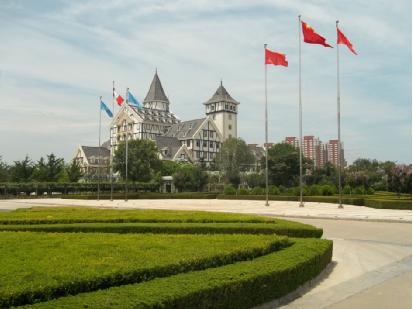Developing a Market for Chinese Wine: Tourism and Education
DateŁş
2014-04-16 14:03 SourceŁş
http://wineeconomist.com Author:
Cynthia Howson, Pierre Ly and Jeff Begun Translator:
We were lucky to spend a month last summer traveling through several Chinese wine regions, meeting producers, farmers, and experts, and tasting some truly delicious wines.
Like many sectors of Chinese economy, the wine industry is growing at breathtaking speeds and we were excited to spend a month finding out how itˇŻs happening. Our last posts talked about how China is developing distinct terroirs and the arrival of world class wines, but thereˇŻs more to the industry than the best tasting wine. ItˇŻs not just the huge production (now 6th in the world), or the arrival of awarding winners like Jiabelan and Silver Heights. ItˇŻs the bevy of chateaux, wine museums, resorts and tourist activities that seem to be popping up faster than customers can fill them. Are there really consumers to justify the small European town at Changyu AFIP? What about the entire roads lined with just-opened wineries and resorts in Ningxia, where a long vine separates lanes and signs are shaped like wine bottles?

Recently, Mike wrote about the ˇ°amenities gapˇ± in Yakima, Washington, where some say there arenˇŻt enough restaurants and hotels to attract visitors, but there arenˇŻt enough tourists to attract investment. But in China, investors seem more than happy to tolerate some empty hotels and restaurants as they anticipate (and promote) future demand. Of course, each new business or infrastructure project helps provincial governments to achieve very high economic growth targets, so the environment for investment matters. But itˇŻs not enough. The seeming promise of an insatiable and growing consumer market in China continues to draw investors from around the world. (The documentary, Red Obsession, shows a China passionate about buying and making expensive red wine and itˇŻs easy to forget that most Chinese people never drink wine, and many others add Sprite).
An Insatiable Market? Developing a Taste for Wine
Industry experts and winemakers repeatedly told us that the Chinese consumer market is bigger than they can satisfy and it continues to grow. But, they are also concerned about marketing to average consumers, people developing a taste for wine when most still prefer spirits (baijiu) or beer and serious wine lovers tend to be biased toward imports. For the winemakers, of course, there are always concerns about a stable and consistent grape supply. High quality wine is a notoriously costly and long term investment, so itˇŻs not surprising that young wineries are not yet profitable. The search to define a style that will distinguish a Ningxia cabernet sauvignon and the ability to coordinate wineries toward the development of appellations is still in the earliest stages. What is unusual in China is that there are resorts and wine clubs when the wines may be largely unknown or difficult to find.
Of course, many resorts and clubs are beautiful, but not yet full or profitable. The crowds have yet to arrive, but investors seem confident enough to continue building. So, what is binding construction companies, real estate moguls and foreign wine merchants in their faith in the Chinese wine market?
There is something to be said for accessing the largest market in the world. Indeed, the most famous wineries have no trouble attracting crowds for their tours and it is worth noting that the tasting at the end of the tour is not an important part of the experience. Some people skip it. Others seem to find it amusing. We appreciated the insight of one expert, who told us that when the tasting seems deemphasized, itˇŻs probably not the best part of the tour.
The picture here is the Changyu Wine Culture Museum on a typical day. The museum is packed with tourists, attracted to the beaches of Shandong Province for the summer holidays. On another tour, we invited our taxi driver to join us. Although more of a beer drinker, he told us about the founder of Changyu Winery in 1892 and took his own pictures in the museum.
So, unlike other wine regions in the world, the infrastructure for wine tourism is appearing in China before the actual tourists. And, the tourists may be willing to come when they are not (yet) wine drinkers. We saw photo shoots with blushing brides and families learning about wine tasting, but what struck us was the number of people who were interested in wine even though they claimed not to like the taste of wine.

Of course, true connoisseurs arenˇŻt left out. They will find wine clubs where they can not only blend their own wine, but actually pick and crush their own grapes before fermenting their own wines. Meanwhile, for families looking for something to do on the weekend, there are day trips where grandparents can play mahjong under a beautiful trellis and kids can pick grapes, run around, and at one wine chateau, they can even play drums or a game of foosball in the wine bar. Indeed, wine tourism in China has something to offer for everyone.